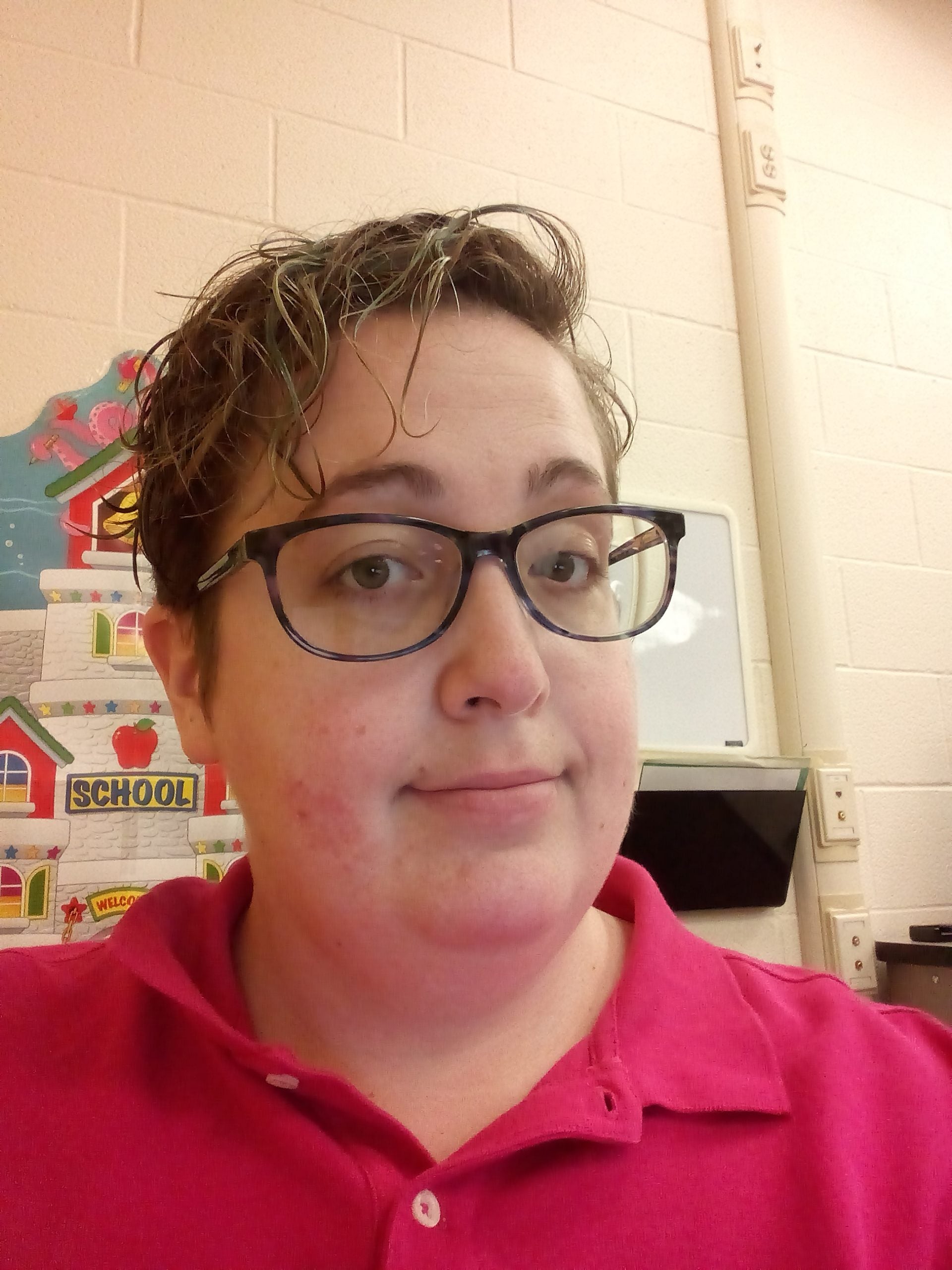This is my 10th year as a special education teacher for high school students. I love working with students that are often misunderstood and underestimated. I have found this passion by working with students with Autism and behaviors, and students with severe and profound disabilities.
This school year has looked very different for me. Most of my students were moved into other classes and I was put in charge of teaching all of the students on hospital/homebound virtually. I kept my student with deafblindness and her one-on-one in person. So now my room runs a little bit differently than it did at the beginning of the year. I teach several online sessions a day and spend one-on-one time with my student with deafblindness throughout the day. For the sake of anonymity, I will refer to my student with deafblindness as Sam. Sam is 16 and came to me with very limited expressive and receptive language.
Sam was given a new one-on-one when at the beginning of the year and then started the classes to become an intervenor. Sam’s soon-to-be intervenor is hearing impaired and fluent in ASL (American Sign Language). This turned out to be a wonderful asset. Sam came with a goal to co-actively sign more and finished. Sam’s assistant Ms. C and I both researched ways to work with students with deafblindness and decided that we would try everything.
My first objective was to find out what motivated her and then use that to start teaching her to communicate. After we found several items that were highly motivating we started with reinforcing “more.” When she had mastered more we started incorporating options she didn’t like as much and worked on “finished.” We made sure to honor her communication so if she said more and we knew she didn’t want it we gave it to her anyway. This allowed her to start recognizing the difference in her communicative intent. I had to sit down and decide what was important, and my first focus was communication and decision-making. I feel that you can’t start on math and literacy without a way to make decisions and communicate.
I started by creating a partial object exchange system with highly motivating objects. She has increased her object vocabulary from 2 to 12. She chooses between two options. We have now included functional choices as well, which included a cup to indicate the nutritional supplement she drinks, an empty water bottle to indicate water, half a spoon for eating, toothbrush for teeth brushing. She has become a more active participant in her personal care routines and assists using hand under hand.
I pride myself on thinking outside of the box and being able to create things out of odd materials for students. Especially on little to no budget I can often create a lot of what I need out of odds and ends, and recycled items. However, Sam was a total mystery to me. I had never had a student with significant dual sensory impairments and I didn’t know where to start or what to try. Thinking outside the box became more essential than ever and yet I felt utterly clueless. Trial and error, along with time and lots of conversations with others and reach helped me get my groove back so to speak. I would say my biggest challenge now is educating other staff. Sam has organically made friends here by just being herself and them being curious, but the staff seems to overlook her, forget she is deaf or blind, or just say hi without using their name indicator to let her know they are there.
Sarah Bradley

